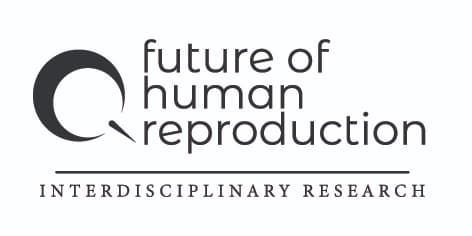What can horror films reveal to us about artificial womb technology and whose lives matter?
Posted on
 © Photograph: Alamy
© Photograph: Alamy
In April 2017 the Children’s Hospital of Philadelphia released a video of their experiment in artificial womb technology; this showed a fetal lamb, suspended in liquid, surviving independently from its mother. When I joined the Future of Human Reproduction team in September 2023 and first saw this video of the lamb gently kicking in its polythene womb, I became fascinated by the way in which animals and non-human life figure in the way we imagine reproductive futures. As a literary critic I am interested in form, symbolism and representation, and the lamb seemed central both to the way the CHOP research team presented their experiment, and to the ways in which human reproduction is intertwined with non-human life.
Setting out to investigate these topics, I joined forces with Dr Dominic O’Key (University of Cambridge), an expert in representations of human-animal relationships in contemporary literature and film. We have recently published an article in the journal Medical Humanities based on this work.
The article analyses the CHOP team’s representation of their animal test subjects alongside two recent horror films, Laura Moss’s Birth/Rebirth (2023) and Valdimar Jóhannsson’s Lamb (Dýrið) (2021), both of which stage child-loss through representations of multi-species families. Our aim was to show how the greater importance of human life in relation to animal life is taken for granted both in medical research and in the generic tropes of horror cinema. Focussing on horror films enabled us to discuss the suppressed narratives and assumptions of CHOP’s research.
We began by looking closely at CHOP’s public-facing video about their experiment, finding a tension in the way the team talk about the lamb both as the object of maternal care and as a subject of their research. They simultaneously equate the lamb with a human fetus to prove the validity of their experiment and maintain a separation between the species to justify the use of animals as test subjects who are operated on and euthanised for human concerns.
We then moved on to discuss the film Birth/Rebirth, a contemporary Frankenstein adaptation that depicts a bereaved mother’s attempts to reanimate her daughter. Using a serum made from material extracted from gestating bodies, the girl is brought back to life. However, over the course of the film, attempts to source these ingredients become increasingly harmful to the women they are taken from. In representing the maternal body as the source of technologised reproduction, the film makes visible the ethics of CHOP’s reproductive futurism which recreates elements of natural gestation to valorise one parental relation at the direct expense of another.
In the following section we moved on to look at Lamb, a film in which a couple of sheep farmers adopt a hybrid lamb-human child. In the bizarre sequence of events that follows, their hubris in removing this lamb from its herd to fulfil their own dreams of parenthood is ultimately punished by the film’s ‘nature bites back’ narrative. Reading CHOP’s experiment alongside this story of animal husbandry and human family making exposes the networks of industrial animal production that provide the lambs and ewes used in their experiment. Our reading highlights the combination of care and violence that defines humanity’s relationship with industrialised animals.
Our article aims to foreground the metaphorical and material roles that animal subjects play in the imagination of reproductive futures in the hope that these might instead be founded on a changed relationship between humans and the natural world.
Find out more
If this article has sparked your interest, we invite you to explore further:
Watch Lamb at the Dukes – Join us on 30th October for a special screening of Valdimar Jóhannsson's Lamb at the Dukes.
Read the full article – Our complete analysis is available in the journal Medical Humanities.
Watch our webinar – Catch up on our recorded webinar "What's literature got to do with it? How literature shapes our views of reproductive technology" to discover more about how literary and cultural texts inform our understanding of reproductive futures.
Related Blogs
Disclaimer
The opinions expressed by our bloggers and those providing comments are personal, and may not necessarily reflect the opinions of Lancaster University. Responsibility for the accuracy of any of the information contained within blog posts belongs to the blogger.
Back to blog listing




